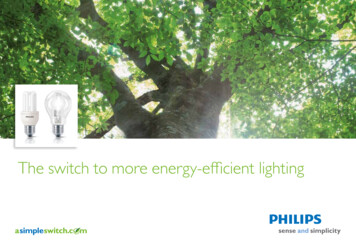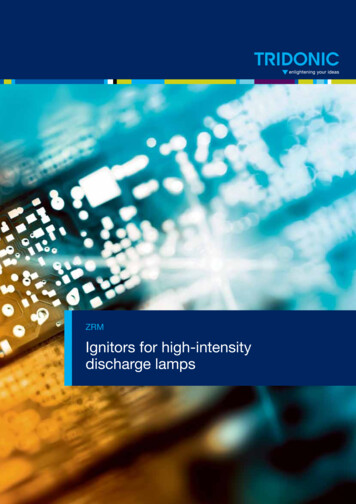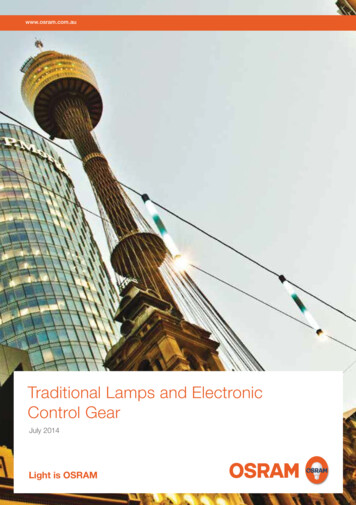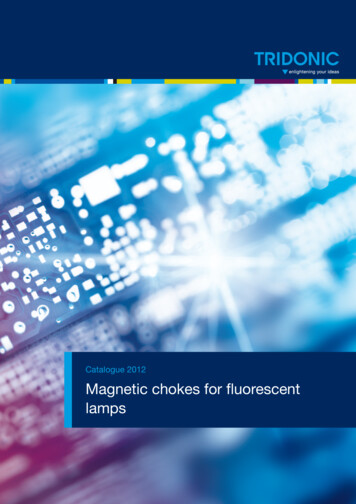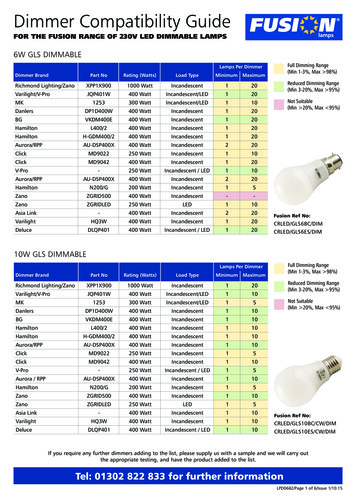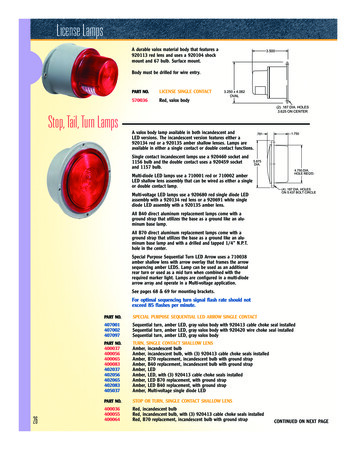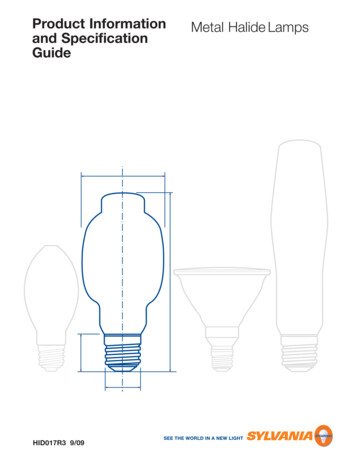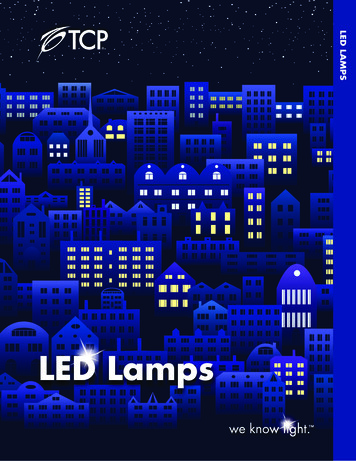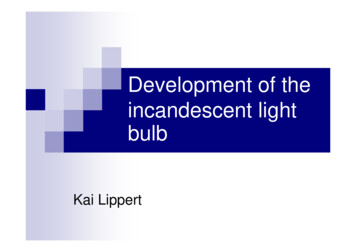
Transcription
Development of theincandescent lightbulbKai Lippert
Outline History of the light bulb Technical Details The Centennial Light Will the light bulb die out?
History of the light bulb 1 Mio. years ago fire was used as alightsource and for protection. 40000 years ago oil lamps were used 4000 years ago candles were made from fatand wax 1800 first gas-lights were installed (London)
1801 Louis J. des Thenard observes that metallglows when it is connected to current. 1820 Arthur de la Rive observes a piece ofPt-wire glowing in the vacuum. 1854 Heinrich Göbel invents the first light bulbwith a charred bamboo filament. 1878 J.W. Swan invents carbon filamentlamp (UK)
1879 Thomas A. Edison also invents a light bulbwith a bamboo filament. (USA)27.01.1880 Patent Nr. 223898 1883 Edison and Swan establish a firm inLondon. 1883 first in Germany produced light bulb. 1890 Carl Auer von Welsbach gets a patent forthe production of Os and W. He founds thefirm Osram.
1890 A.N. Lodygim tries to replace the bamboofilament by a metall wire. 1897 W. Nernst invents the „Nernststift“ (todayIR-radiator). 1902 O. Feuerlein and W.von Bolton use Ta fortheir light bulbs. 1903 W.Whitnew covers a carbon filament withmetall to prevent the evaporation of thefilament.
1905 light bulbs with Ta are produced, till1st World War more than 50 Mio. pieces. 1906 GE gets a patent for the production of Wfilaments 1910 W.D. Coolidge is able to produce cheap W. 1911 I.Langmuir uses Ar-N2 for filling the glasbulb and increases the lifetime
1936 Krypton is used as filling gas. The socalled “coiled coil” is invented. 1958 Xenon is used as filling gas. 1960 Halogen lamps were invented. First LEDs
Technical DetailsComparrison ofdifferent light bulbs
IntensityDependence of the temperature and intensityWavelength [nm]
Some melting points of important materialsIdeal temperature for aW-filamentwould be 6600 C !6600 C 95 lm/wMax: 52 lm/w (3410 C)ElementCWReMelting point3550 C (3823K)3410 C (3683K)3180 C (3453K)OsTa(Fe3045 C (3318K)2996 C (3269K)1535 C (1808K))
Differenttypes oflight sourcesTypeOverall luminousefficiencelm/w40 W tungsten1,9%12,660 W tungsten2,1%14,5100 W tungsten2,6%17,5glass halogen2,3%16quartz halogen3,5%24high-temp.incandescent5,1%35black body at 4000K7,0%47,5black body at 7000K14%95ideal white lightsource35,5%242,5ideal green (555nm)100%683
Different lamps at 110 VoltOutput (lm)Power(W)Output 35017,4150285019,0200390019,5300620020,7
Lifetime vs. Lumen outputÄndern!!brightnesslifetime
Dependence of the temperature and the radiation
The Centennial Light Burns since 19014 Watts and 110 VoltsC- filament
Will the light bulb die out? In 2005 F. Castro asks to use lamps with amaximum of 15 WIreland forbids incandescent lights from 2009 on.Australia forbids incandescent lights from 2010on.Italia also plans to bann the incandescent lightsCanada wants to change 2012USA wants to change between 2012 and 2014
Thanks for Your attention
Sources .com/news/article.asp?ARTICLE ID ndescent light o.uk/technology/milestones/light bulb/index.shtmlhttp://www.gelighting.com/na/home lighting/ask us/faq compact.htm
1879 Thomas A. Edison also invents a light bulb with a bamboo filament. (USA) 27.01.1880 Patent Nr. 223898 1883 Edison and Swan establish a firm in London. 1883 first in Germany produced light bulb. 1890 Carl Auer von Welsbach gets a patent for the production of Os and W. He founds the firm Osram.

